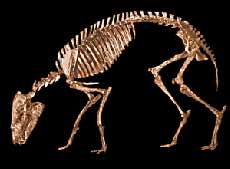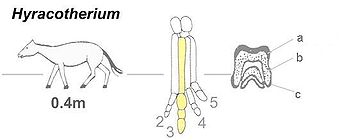| Home Medical Index | First Posted: Dec 26, 2011 Jan 21, 2020 | |
Horses and Mouth Injuriesby Debora JohnsonHave you ever noticed that your horse's behavior has changed, in a negative way, while eating, being bitted or while being ridden? Consider the possibility of some sort of mouth injury. Try to identify a problem. Clues: Identifying Problems Your horse may be giving you some clues that there is a problem. The trick is to be able to key in on the tips and identify the problem. Often this atypical behavior stems from problems in the horse's mouth. Below are a number of clues that may indicate that there is a problem with your horse's mouth. Horses can injure their lips, cheeks, teeth, and tongues in many ways.
Take A Closer LookHow Does Mouth Injury Occur?
Mouth Infections
Lip Injuries
Tooth Injuries "This small dog-sized animal is the oldest found horse ancestor that lived about 55 million years ago. It had a primitive short face, with eye sockets in the middle and a short diastema (the space between the front teeth and the cheek teeth). Although it has low-crowned teeth, we see the beginnings of the characteristic horse-like ridges on the molars."
Evolution of A Horse/Tufts University   Eocene horse lived 55 million years ago The horse's skull has evolved to accommodate greater quantities of high-fiber forage foods. The horse's Eocene ancestor as seen above, stood a little over two feet tall. Modern equus are now almost triple that height and require 27 times more food! An amazing grinding system of the horse's teeth accommodates such an increase in food intake and processing. The adult male horse has up to 44 permanent teeth. Mares may have between 36 to 40 permanent teeth. Horses get two sets of teeth in their lifetime. The baby teeth (deciduous teeth) are temporary. Most horses will have their full set of permanent teeth by age five. There are three types of equine teeth: (1) Incisors are the forward teeth that shear off forage. (2) Cheek teeth are the molars and premolars which are wide, flat and grooved on the surface. These cheek teeth are used for grinding and mashing the forage. (3) There are four or five canine teeth (tushes, tusks) between the molars and incisors. Generally all male horses have four canines. However, few female horses (less than 28%) have canines, and those that do usually have only one or two, which many times are only partially erupted. These teeth are used for tearing the food and for fighting. The head and neck of the horse are elongated allowing for continual pastural grazing. This elongation increases the height and complexity of the tooth shape. The following are some ways that the horse may injure teeth:
More on teeth: Equine Teeth Equine (Horse) Teeth Floating Teeth Tips Picking Equine Dentist For More Information: Mouth Injuries in Horses Melinda Freckleton, DVM, of Haymarket Veterinary Services in Virginia--quoted in this article--is one of our vets. She is excellent!Mouth Injuries in Horses |